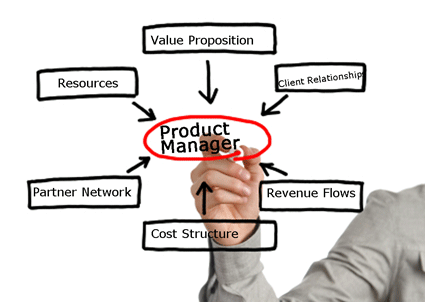The Perfect Storm has come together of Excess Capacity and Product Variety was a blog post from a while back that quoted Carol Ptak as saying, “A lot of people have focused on the fact that the Economic times right now are really bad. What a lot of people are missing is the fact that the world around us has fundamentally changed.” I encourage you to read the entire blog post because it sets up what the author of the book Open Services Innovation, Henry Chesbrough calls the commodity trap. The trap is made up of:
- Manufacturing and business process knowledge insights being widely distributed (It is getting hard to differentiate and sustain product advantages).
- Manufacturing of products moving across the world with very low costs.
- Product Life Cycles getting shorter and shorter.
Paraphrasing from the book:
Macroeconomics policies help to create conditions for growth to occur. There is really only one way out of all this. However, we must rediscover growth and innovation at the microeconomic level. They have to stop thinking like product manufacturers and think about an open service perspective to discover new ways to generate profitable growth.
Product-focused companies face another challenge in thinking beyond the product. The role of the customer, the interaction between customer and supplier, and the design of the supply chain may have to change in a service-oriented business model. This shift toward services can also produce significant conflicts within the organization.
One example of these conflicts is how to charge for services versus how to charge for a product. When selling a product, a salesperson often bundles in some service items in order to complete the sale, and usually without changing the price of the product. A product might come bundled with a warranty for a specific period of time, or free installation and training. But when a company shifts to a services-based business model, these “freebies” that were bundled in now become separate items that have their own prices. More fundamental, a product is usually a lump-sum purchase, while a service is typically sold as something that is consumed over time, as with a subscription or some other ongoing revenue stream. This creates a need for a different kind of sales and distribution process and also different kinds of salespeople.
In most product-based companies the product manager, or in Lean terms it might be the Value Stream Manager, would be directly responsible for bringing this change about. My training as a Product Manager (VSM) consisted of the Pragmatic Marketing Framework which I believe to be the soundest and most comprehensive product manager/marketing model. But how do we make that shift to Service-Dominant thinking? It is not an easy step because as stated in the above paragraph you must flip many so-called give-aways to revenue!
To implement these components the soundest strategy is based on one of the oldest methodologies, the one of scientific experimentation. I typically look at it from the view of the Deming/Shewhart PDCA cycle but nevertheless it is hypothesis testing. When you think of PDCA, you typically think of it from the perspective of problem solving. But it must be utilized on a much grander scale in this case. The point is that you need to do this in a low risk way through small incremental improvements. You will fail, make mistakes and in an open innovation culture these mistakes are out there for everyone to see. I can only assume most of us would prefer to get caught with a hose leaking versus a dam bursting.
However, I would as a Product Manager replace the Pragmatic Marketing Framework with Alex Osterwalder’s Business Model Generation (BMGen) template (Short Video on the BMGen Canvas in links below – Steve Blank…). Can just a map turn you into a service company? Not at all, but what the BMGen does is bring the business components needed to the forefront and provide a one-page visualization of the process. It allows you to manage small individual PDCA cycles within the subgroups ultimately creating an entre new canvas or layer. The BMGen utilizes the components of Design Thinking that I believe strengthens the connection with the customer for co-creation. A great way to bring Product Managers into open innovation.

When typical product-based organizations think of co-creation, they think of their engineers working with customers to develop their products in a more customer-friendly way. That is one way, but the real advantage in co-creation is the development of sustainable services through the use of your product. An example of this is Xerox’s managed print services that have won them long-term and profitable contracts with Sundstrand and Ingersoll Rand.
The Product Manager (VSM) is the key person in the organization that can accomplish this transformation. He provides the thought leadership, product knowledge, customer insights and level of authority needed. Without support at this key position, these ideas will prove to be just that, ideas!
Warning: Your Product Manager (VSM) must be trained and on board before attempting this transformation or it may be dangerous to the organization.
Related Information:
Steve Blank on the Lean Startup at Ann Arbor
Dealing with uncertainty in the Lean Startup
Why bother with Value Networks?
Lean Thinking: Prototype early and often

Comments are closed.